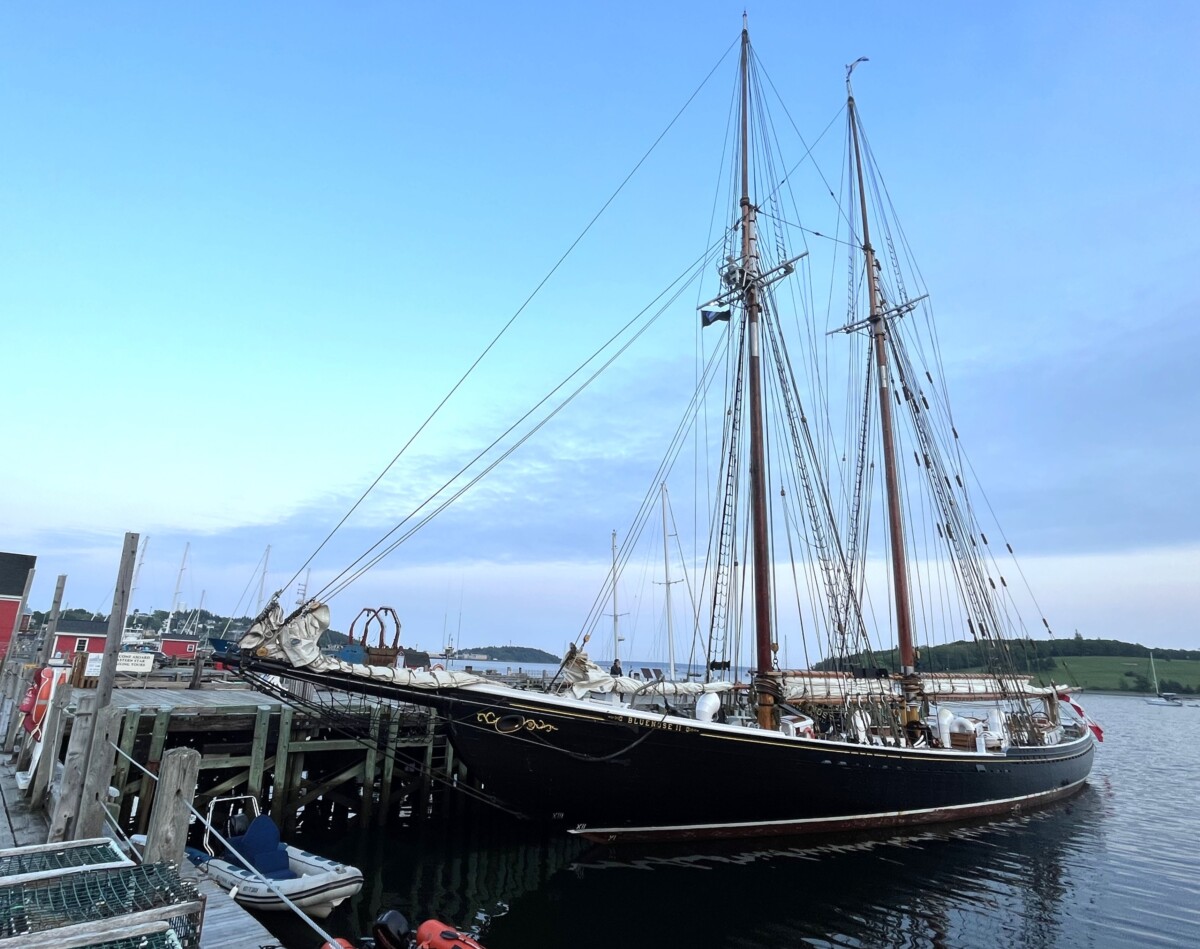Our trip was winding down and we decided to stay near Lunenburg after sightseeing in Halifax and Peggy’s Cove. We found a great B&B in Mahone Bay just about 7 miles north of Lunenburg.
Mahone Bay
Originally inhabited by the Mi’ kmaq Indians, the French came to the area in the 1600s, followed by the British in 1713. However, it wasn’t until the 1750s that the villages of Lunenburg and Mahone Bay really took off. During this period the British brought “Foreign Protestants” from Germany, France, and Switzerland to settle Halifax, giving free passage and food for one year. But the immigrants found Halifax lacking in farmland and the British moved them to the Lunenburg area. Shipbuilding became a popular industry soon after, and in 1919, the villagers incorporated the town.
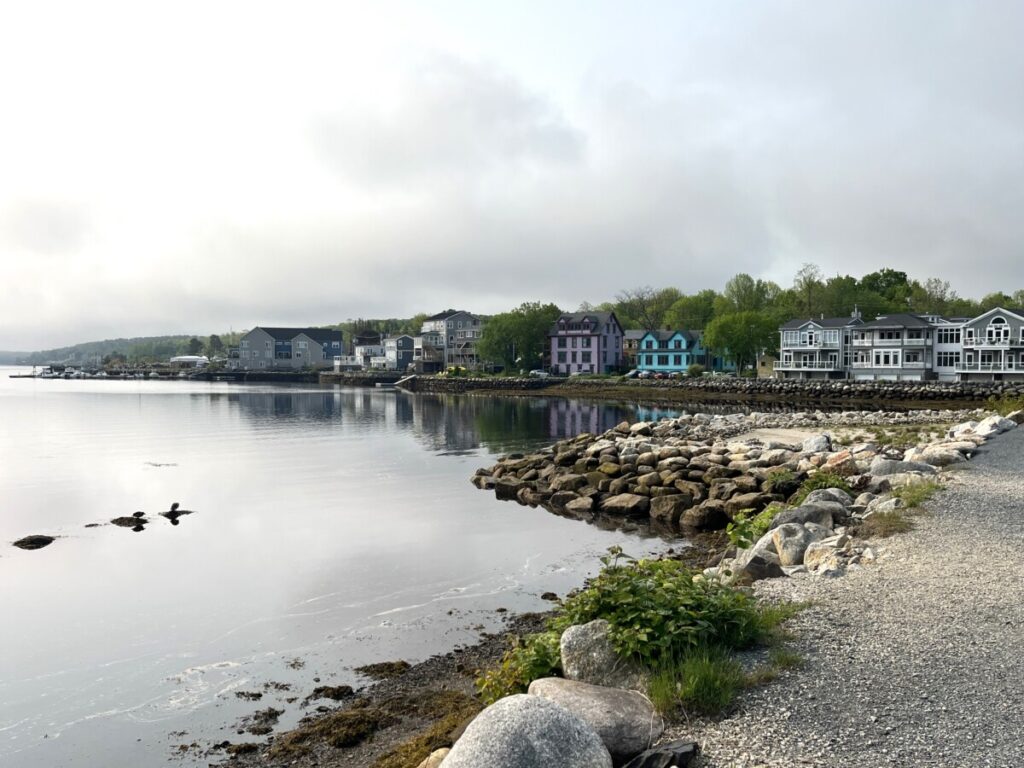
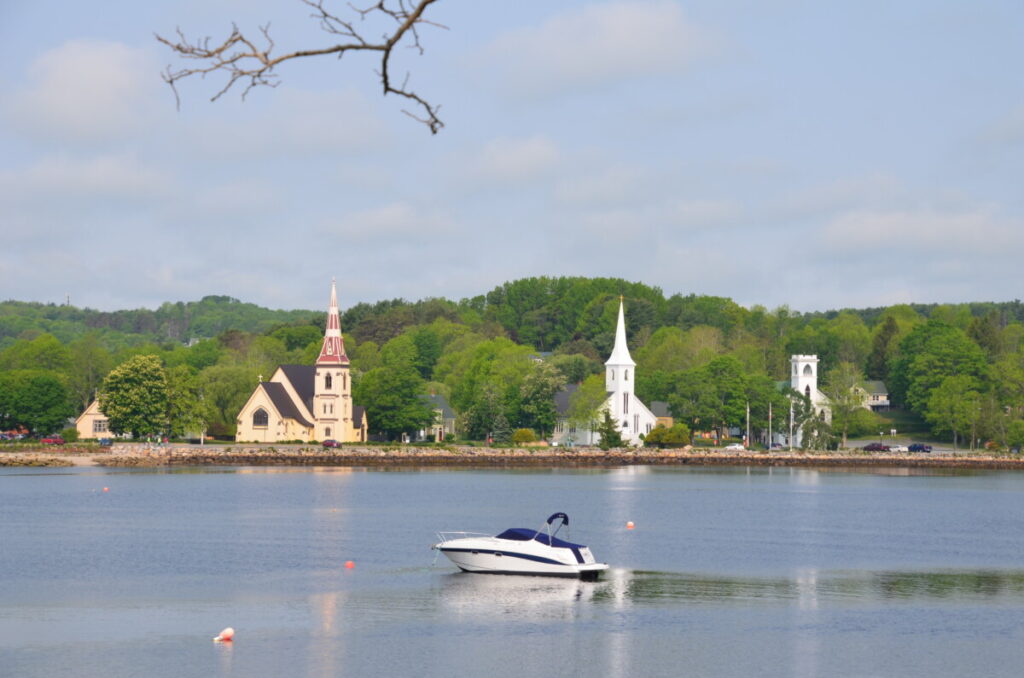
Over 300 tiny islands dot the area and the French originally called it “La baye des toutes iles” translating to “The bay of many islands.” Later the name changed to the French word “mahonne,” a type of barge used in the area. Today, the town of less than 1,000 residents is known for the three beautiful churches next to each other along the shore – St. James Anglican, St. John’s Evangelical Lutheran, Trinity United.
Blue Rocks
When we checked into our B&B, the owner recommended going into Lunenburg for dinner and driving a few extra miles to Blue Rocks. The small fishing village, named after the slate rocks that appear blue, boasts idyllic scenery.

We arrived right before dusk when all was quiet and serene. Touted as “Lunenburg’s answer to Peggy’s Cove,” the area lies just a few miles from Lunenburg.
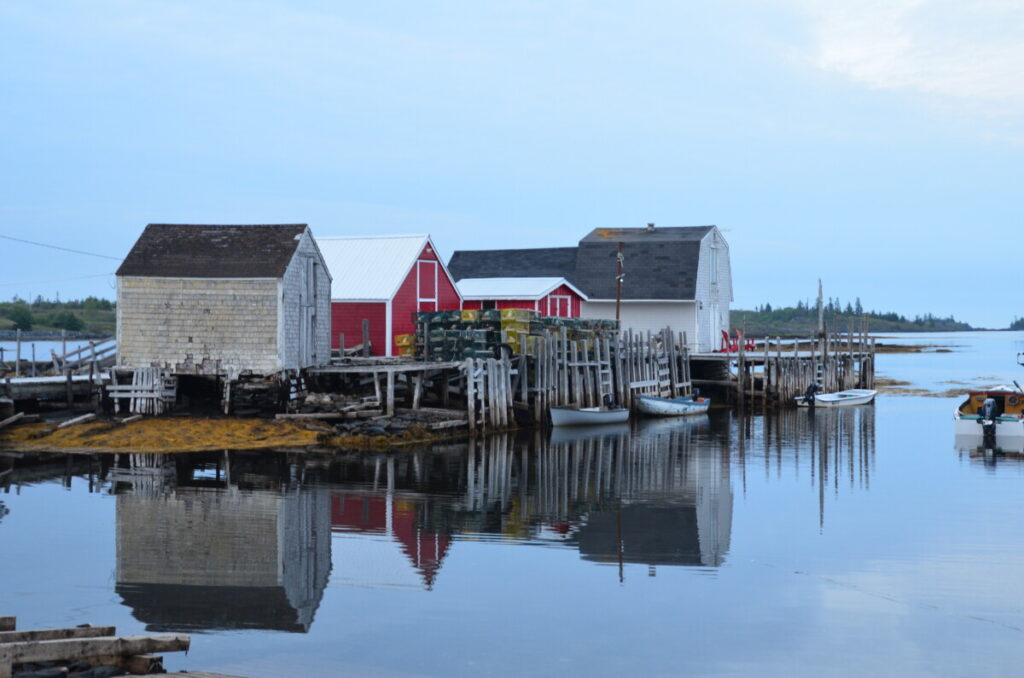
Although we didn’t have time to do it, Blue Rocks boasts some of the best kayaking in the area. Another draw is the Terra Beata Cranberry Farm nearby, with u-pick cranberries every October.
Lunenburg
The next morning, we met other B&B guests at breakfast and learned about Lunenburg Walking Tours. Fortunately, we were able to get a spot on the morning tour which began at Lunenburg Academy.
Lunenburg Walking Tour
After meeting others on our walking tour, we learned about Lunenburg Academy from our tour guide, Marianne. Sitting on top of Gallows Hill near the town cemetery, the building functioned as a school from its inception in 1895 through 1965 (all grades through high school) and 2012 (all elementary grades). Visitors can tour the three-story wooden building, which serves as a community center today, free of charge.
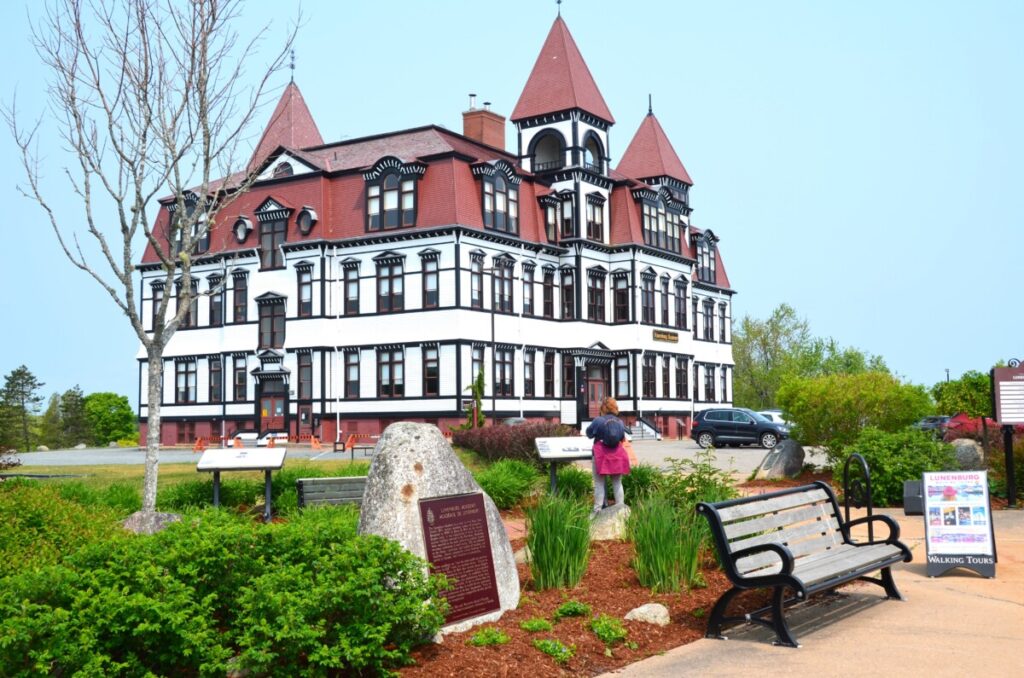
Our tour guide explained the British planned many communities in Canada. However, Lunenburg earned UNESCO World Heritage status because it’s one of the only towns that retained its original layout. The British designed all the streets in a grid pattern from Gallows Hill down to the waterfront area. We stopped at a house nicknamed the “Wedding Cake House.”
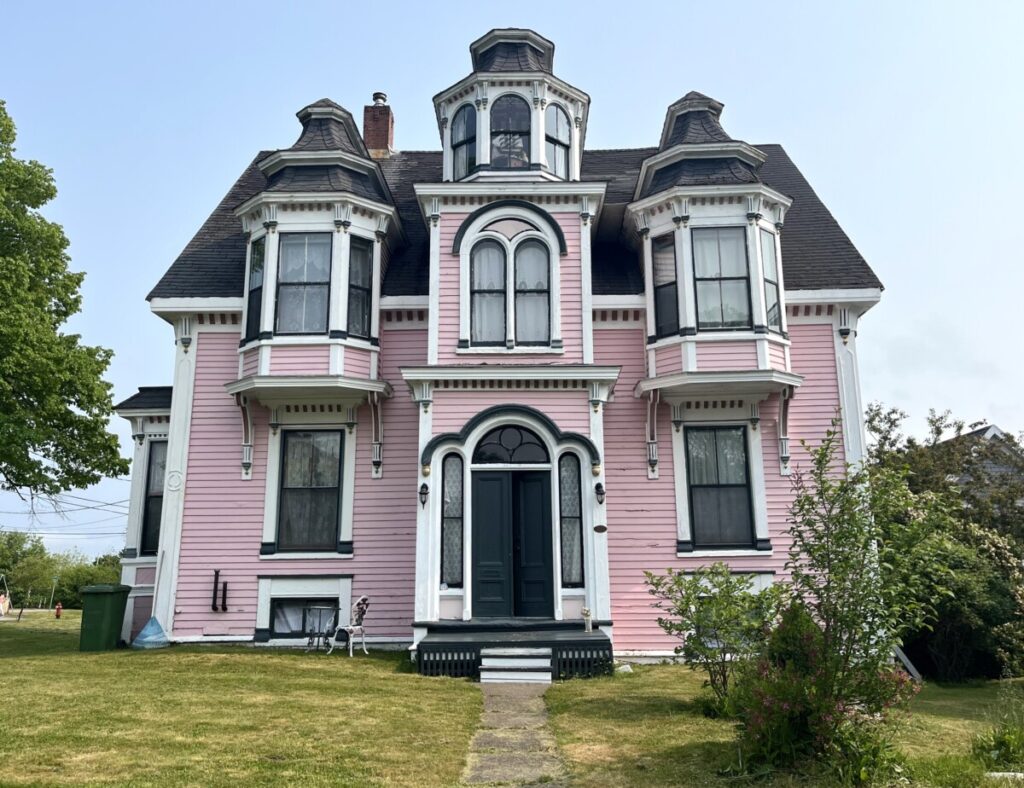
Constructed in the 1880s for Allan Moreash, who later became Lunenburg’s second mayor, the Victorian house features a “bump.” These bay windows set into the roofline, also called Scottish dormers, are found all over the town.
Not every house in Lunenburg boasts opulent Victorian styles. Many of the older homes feature Acadian-style architecture. These solidly built wooden homes are simpler in design, with steep sloped roofs and a story and a half of living space.
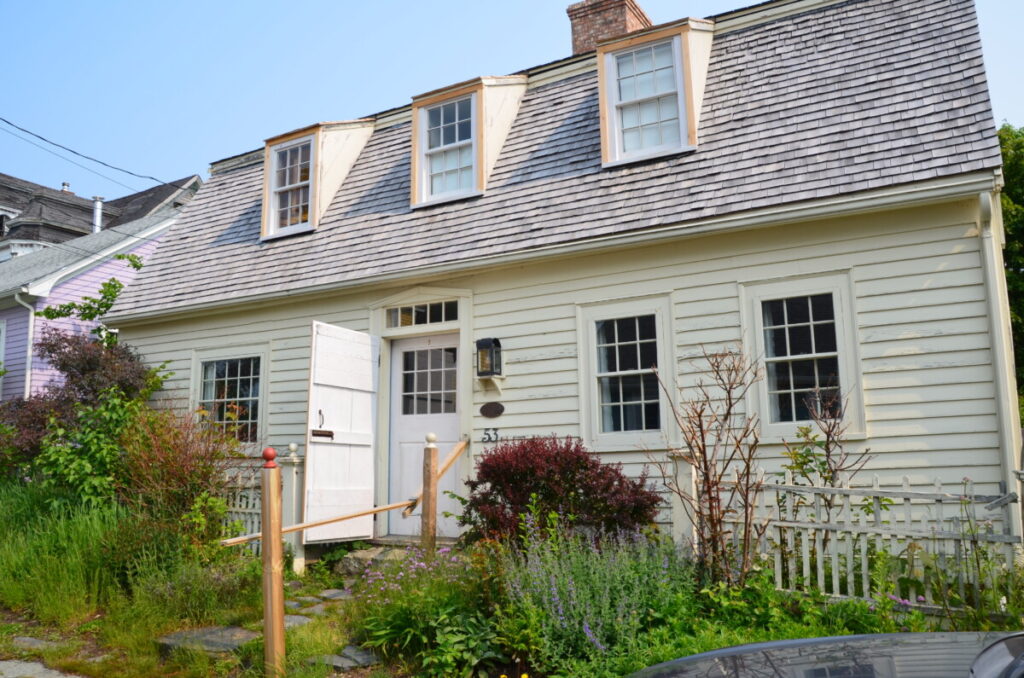
We stepped inside Zion Evangelical Lutheran Church, the oldest Lutheran congregation in Canada. Although the congregation dates back to 1772, the High Victorian Gothic building today was built in 1890.
In the town’s center, we came to St. John’s Anglican Church. Not only is it the oldest church in Lunenburg, it is the second-oldest Anglican church in Canada. Marianne told us how a fire on Halloween 2001 destroyed a large portion of the structure, built around 1754. The town came together, raising $7 million to rebuild the church in the same historic manner in under four years.

Inside the church, directly above the altar, we viewed gold stars painted amidst a nighttime sky. Marianne told us that an artist restoring that section wanted more information about the stars’ placement. Researchers at St. Mary’s University identified the constellation as Perseus. The plot thickens. With computer imaging, they realized the stars matched the exact placement and pattern in the Lunenburg sky not when originally painted in the 1750s, but on December 25, the year of Christ’s birth! You can read more details about it here.
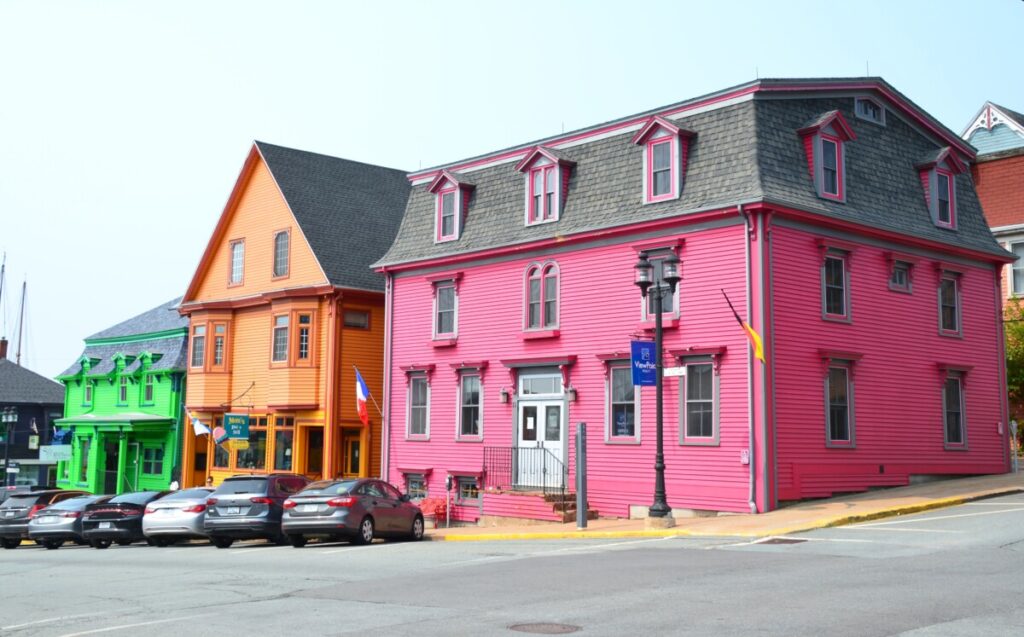
Closer to the water along King Street, we saw brightly colored buildings. A few decades ago, much of Lunenburg would have been painted in white with black trim (similar to St. John’s Anglican Church). However, the owner of these buildings painted them in colors more suitable to the Victorian times. A trend began and now the area is called “UNESCO Fresco.”
Our tour concluded right on the waterfront. Although bustling with activity and restaurants today, Marianne reminded us that residents in the 1800s preferred to be far from the waterfront and “fishy” smells.
The Bluenose II
In the early days, travel to Halifax and the surrounding areas was best by boat and Lunenburg quickly became a shipbuilding center. In 1921, the firm of Smith and Rhuland constructed the Bluenose schooner. With Captain Angus Walters at the helm, the schooner won racing matches and became the “Queen of the North Atlantic.” In 1937, Canada honored the vessel by placing a reproduction of it on the Canadian dime.
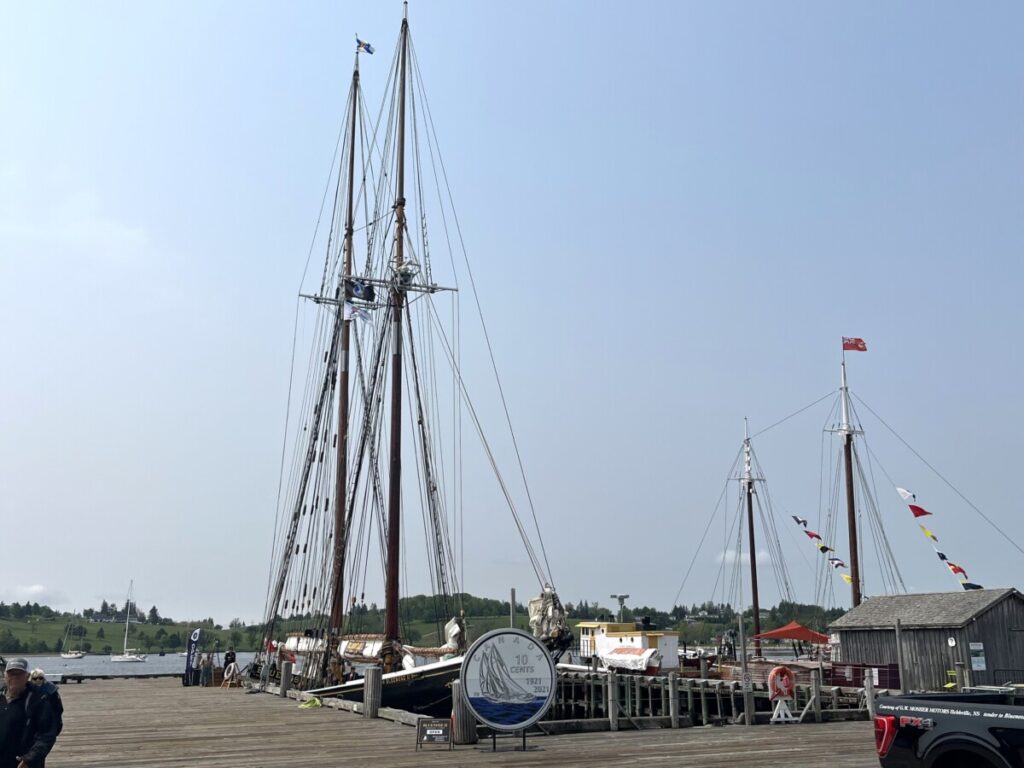
Unfortunately, the schooner sank off the coast of Haiti in 1946. However, in 1963, Nova Scotians launched Bluenose II. When not touring North America on goodwill ambassador trips, it resides in Lunenburg. We got to go aboard the ship and even steer the ship’s wheel.
Conclusion
While we only spent one night in Lunenburg, the area brims with scenery and history. Had time allowed, we wanted to visit the Fisheries Museum of the Atlantic. Instead, we only had time to pick up lunch and pop into a few art galleries. For more information, visit the Lunenburg Region website here.
